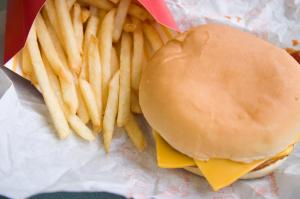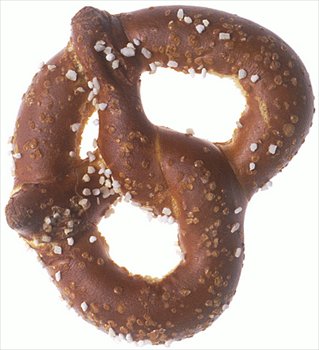High-calorie snacks and sugar-sweetened beverages dominate the concession stand menus at youth baseball games, finds a new observational study, contributing to unhealthy dietary habits of children and families. (Irby, 2014).
Researchers at Wake Forest School of Medicine investigated the foods consumed by players aged 8 to 11 and spectators, either from concession stands or brought as team snacks, at a youth baseball field in a small town in North Carolina. Not surprisingly, and consistent with earlier studies (Thomas, 2013), they found that the foods consumed were predominately high-calorie snacks and beverages.
The study recommends that more attention be paid to the food enviroments surrounding organized sports in order to add to the already positive benefits of sport participation, and views establishing policies regarding foods available at sporting events as a promising public health step because it appears few have established policies.
Players and Teams Snacks
Researchers found that:
- Most (72%) team snacks provided by parents during or after games were French fries, chips, crackers, popcorn, candy, or cookies, with some healthier items, including granola bars and peanuts.

- Beverages offered with team snacks included:
- water (31.7%)
- diet soda (32.9%)
- sports drinks (26.8%)
- regular soda (8.5%),
- Most beverages (53%) consumed in the dugout during games were sugar-sweetened (milk shakes, regular sodas, or sports drinks); 41% were water, sugar-free drinks, or diet sodas; and 6% were unable to be classified (opaque container or tea that could not be determined to be sweetened or unsweetened).
Spectators
Among adult and child spectators, the study found that:
- 6% were fast food items purchased outside of the field
- 5% were prepared meals brought from home, and
- All others were purchased from the concession stand (89%), of which:
- 73% were less healthy options, including French fries, potato chips, popcorn, candy, cookies, or ice cream
- 23% were healthier options, such as fruit, vegetables, peanuts, or granola bars; and
- 4% were sandwiches and were unable to be sufficiently classified as healthy or unhealthy.
- For beverages, regular soda was consumed most frequently, followed by water, sports drinks, and diet soda.
Items available for purchase at the ballpark concession stand were predominantly unhealthy (fried foods, hot dogs, hamburgers, chips, candy, and ice cream). Healthier alternatives included a grilled chicken sandwich, vegetables (such as salads), and bottled water.
Healthier food options needed
"This study shows the need to offer healthier options at youth baseball games, but this also applies to other youth sporting events," said Helena H. Laroche, MD, an Assistant Professor of Internal Medicine and Pediatrics at the University of Iowa, and the author of a 2014 pilot study (Laroche, 2014) demonstrating that unhealthy foods at youth sports concession stands can be gradually replaced with healthier choices without a loss of revenue, profits, or customer satisfaction.
"I am especially struck by the team snacks provided, which were unhealthy except for granola bars (which can vary greatly in their nutritional content and healthfulness). Among the healthier options which could be, but were not offered, said Laroche, included:
- cut vegetables or baby carrots and dip, and peanut butter.
- Cheese sticks (string cheese) and
- Fruit of any sort whether whole or cut up, including raisins. Cut fruit may sell better but requires more prep time.
Laroche noted that these option can be less costly when bought in bulk and when focusing on fruits in season or on sale.
"The availability of some healthier items at the concession stand is a good start (such as peanuts, granola bars (again depends on what type of granola bars), vegetables (not clear what sort), fruit and sandwiches). However they may need to may them more visible, advertise them more, and/or adjust prices to make them less expensive than the less healthy options," Laroche said.
Packaging them as meal deals (sandwich, fruit and water; fruit, string cheese and water, etc.) can also work, she said.
Other healthier options, Laroche suggested include:
- large pickles

- fruit juice slushies
- soft pretzels,
- grilled chicken or pork sandwiches (big sellers).
- promoting water and offering lower sugar sports drinks like G2, and seltzer water.
Contribute to unhealthy dietary habits
"Although youth baseball likely provides children with an opportunity to increase their physical activity, the youth baseball environment may inadvertently contribute to unhealthy dietary habits of children and families," wrote lead author Megan Irby of the Department of Pediatrics at Wake Forest. "Being a prime avenue for children's physical activity, more attention to the food enviroments surrounding organized sports should add to the already positive benefits of sport participation," Irby said.
"Establishing policies regarding foods available at sporting events is a promising public health step," she wrote, "because it appears few have established policies." Noting that more than half of outdoor sports facilities are community owned and operated, Irby said that engaging parents and sports leagues in conducting family-based interventions "may be feasible ways to improve activity and nutrtion behaviors at the community level."
Irby MB, Drury-Brown M, Skelton JA. The Food Environment of Youth Baseball. Childhood Obesity. 2014;10(3):1-6. DOI:10.1089/chi.2013.0161.
Laroche H, Ford C, Hansen K, Cai X, Just DR, Hanks AS, Wansik B. Concession stand makeovers: a pilot study of offering healthy foods at high school concession stands. J Public Health 2014;doi:10.1093/pubmed/fdu015 (first published online March 12, 2014)
Thomas M, Nelson TF, Harwood E, Neumark-Sztainer D. Exploring Parent Perceptions of the Food Environment in Youth Sport. J Nutrition Ed Behav. 2012;44(4):365-371.
Posted July 9, 2014









